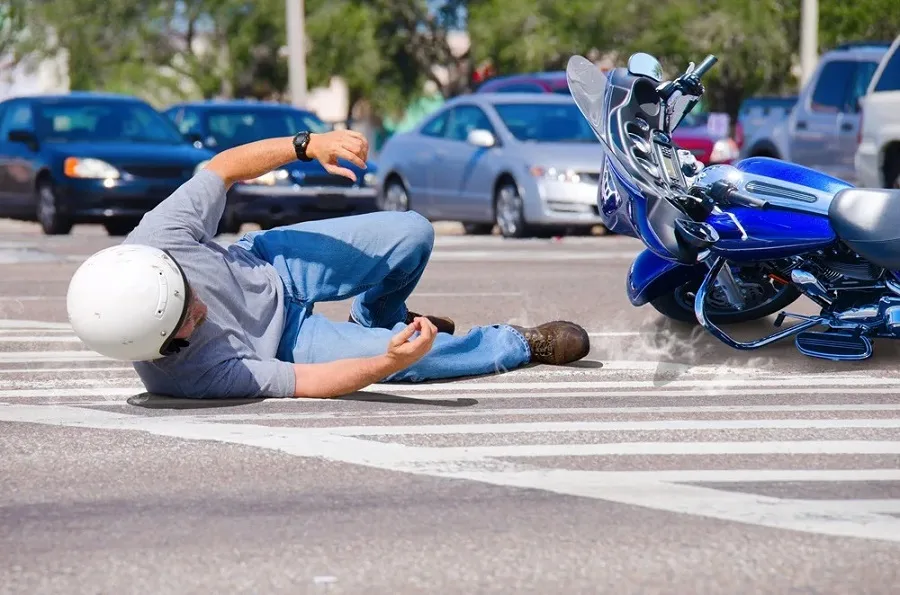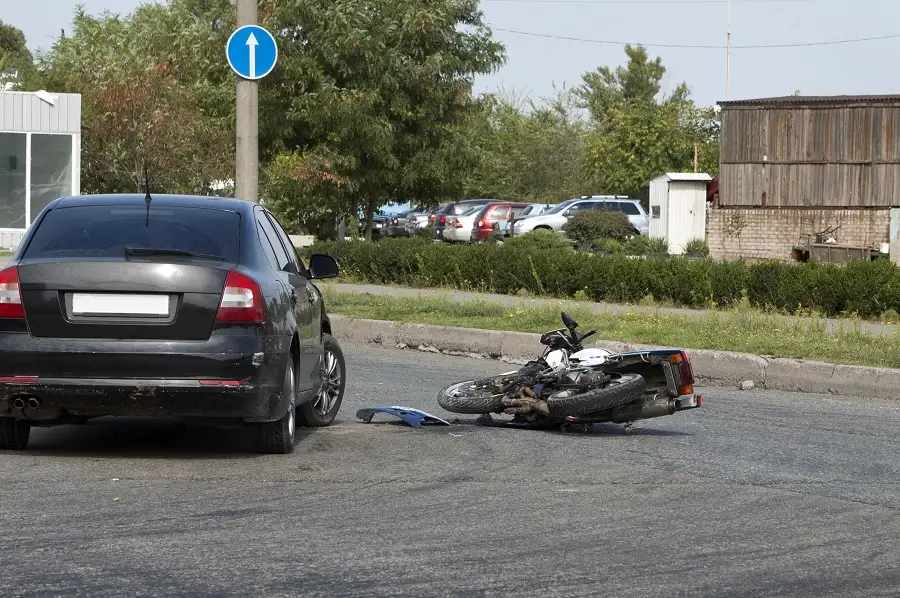Motorcycle accidents in California continue to present serious risks for riders, with recent data highlighting the ongoing safety challenges on the state's roads:
- In 2023, 583 motorcyclists died in traffic crashes in California, representing 14% of all traffic fatalities in the state.
- While this shows a 10.2% decrease from 649 deaths in 2022, the overall fatality count remains nearly 19% higher than the 491 fatalities recorded in 2019.
- According to early 2025 data, California’s total traffic fatalities decreased by 2.4% compared to 2024. This may suggest a possible decline in motorcycle crashes — but the current fatality numbers remain high and concerning.
Health insurance serves as a vital safety net, helping individuals manage medical bills incurred from accidents and illnesses. It provides financial support by covering various care-related services and treatments.
In this post, the experienced motorcycle accident lawyers at Cohen & Marzban examine the specifics of health insurance coverage for motorcycle injuries in California in 2025-2026, shedding light on what health insurance companies cover — and what they don't.
Health Insurance Policies and Motorcycle Accident Injuries
Health insurance in California covers medical expenses like hospital stays, medications, and surgeries. Coverage varies by plan and may involve deductibles, copayments, and network rules. If another party is at fault, the insurer may seek reimbursement from any legal settlement.
What Does Health Insurance Actually Cover After Your Accident?

Health insurance typically covers a range of costs related to motorcycle accident injuries, including the following:
- Hospitalization: Costs for staying in a hospital, including room charges, nursing care, and medications.
- Surgery: Expenses for surgical procedures required due to injuries sustained in the accident.
- Medical tests: Costs for diagnostic tests, such as X-rays, MRIs, and lab work.
- Prescription medications: Coverage for medications prescribed to treat injuries or manage pain.
- Doctor visits: Charges for visits to physicians, specialists, and other healthcare providers involved in treatment.
- Physical therapy: Costs associated with physical therapy sessions and rehabilitation.
Specific coverage details can vary depending on the individual's plan. Policyholders should review their insurance documents or contact their insurance providers to understand the exact coverage limits, deductibles, copayments, and exclusions that may apply to motorcycle accident injuries.
What Does Health Insurance Not Cover After a Motorcycle Accident?

Common exclusions or limitations may apply to coverage for motorcycle accident injuries in California. They include:
- Experimental treatments: Not all plans may cover costs for experimental or investigational treatments that aren't considered standard medical practice, like new drug trials or cutting-edge therapies.
- Non-emergency care: Expenses for non-emergency care or treatments deemed not medically necessary, such as cosmetic procedures or elective surgeries, may be excluded.
- Out-of-network providers: Costs for healthcare services from providers outside the insurance network may require higher out-of-pocket expenses or only be partially covered. For instance, a motorcyclist may face greater costs if they visit a specialist outside their insurance network for spinal treatment.
- Deductibles and copayments: Policyholders may be responsible for paying deductibles, copayments, or coinsurance amounts before coverage kicks in or for certain services.
- Coverage limits: Some plans impose annual or lifetime limits on coverage, which could affect the total amount paid for medical expenses related to motorcycle accident injuries. If a motorcyclist's plan has a $100,000 annual limit, all medical costs exceeding this amount may be their responsibility.
It's important to thoroughly review your health insurance policy documents or contact your insurance provider directly to understand all exclusions that may apply to coverage for motorcycle accident injuries in California.
Common Motorcycle Accident Injuries Covered by Health Insurance
Motorcycle accidents often result in severe and life-altering injuries due to the lack of physical protection compared to enclosed vehicles. Understanding the most common motorcycle accident injuries helps riders recognize the importance of adequate health insurance coverage and the potential medical costs they may face after a motorcycle crash.
The following are the most frequently sustained injuries in motorcycle accidents:
- Traumatic brain injuries (TBI): Even with helmets, head trauma like concussions or brain damage is common and costly.
- Spinal cord injuries: Can lead to paralysis; requires surgery, rehab, and long-term care.
- Broken bones: Fractures to arms, legs, ribs, or pelvis often need surgery and months of physical therapy.
- Road rash & burns: Skin abrasions and burns from pavement or engine parts need wound care or grafts.
- Internal injuries: Hidden organ damage or bleeding may require emergency surgery and ICU care.
- Facial & dental injuries: Jaw fractures, dental damage, and facial trauma may need reconstructive surgery.
Severe motorcycle injuries often lead to massive medical bills. Adequate health insurance helps, but riders should understand coverage limits and be ready to seek legal compensation for uncovered costs.
Types of Health Insurance for Motorcycle Accidents in California

Here are the main types of health insurance plans available for covering medical expenses related to motorcycle accidents in The Golden State:
Each of these coverage types plays a distinct role in providing access to medical care after motorcycle accidents in California, offering varying levels of protection and eligibility criteria based on individual circumstances.
California Motorcycle Insurance Laws and Requirements

California's insurance laws are specifically designed to address motorcycle accidents, impacting how things like liability, coverage, and compensation are determined. Here are some of the key aspects of the state's insurance rules:
The 2025 California Insurance Requirements
In 2025, California renewed its auto and motorcycle insurance requirements, updating minimum liability coverage limits to better protect accident victims. Effective January 1, 2025, the minimum liability insurance requirements for motorcycles in California increased significantly:
- $30,000 for bodily injury or death of one person
- $60,000 for bodily injury or death of multiple people
- $15,000 for property damage
These changes reflect the increasing costs of medical care and the severe financial burden that motorcycle accidents can impose on injured riders and their families. The elevated limits help ensure that at-fault drivers carry adequate coverage to compensate common motorcycle accident injuries, though severe crashes involving traumatic brain injuries or spinal injuries may still exceed these minimums.
Fault-Based System
California employs a fault-based system for determining liability in accidents. This means that the party deemed responsible for the accident is typically on the hook for the resulting injuries and damages.
If the driver of a car rear-ends a motorcyclist and is found to be at fault, the driver's insurance will pay for the motorcyclist's medical expenses and vehicle repairs.

Uninsured/Underinsured Motorist Coverage (UM/UIM)
While not mandatory, California encourages motorcyclists to carry uninsured or underinsured motorist coverage. This type of insurance protects motorcyclists if they're involved in accidents with drivers who lack sufficient coverage to fully compensate them for their injuries.
If a motorcyclist is hit by an uninsured driver, UM/UIM coverage can help pay for their medical expenses and other losses.
Comparative Negligence
California applies the principle of pure comparative negligence in determining liability and compensation. Under this system, the court assesses each party's degree of fault in an accident and adjusts their financial awards and obligations accordingly.
Statute of Limitations
Motorcycle accident victims in California must be mindful of the state's statutes of limitations when filing insurance claims or lawsuits to seek compensation.
The statute of limitations for personal injury claims, including those stemming from motorcycle accidents, is two years from the date of the accident. Failure to take action within this time frame can result in the forfeiture of the right to pursue legal remedies for injuries and other losses sustained in the accident.
Understanding these characteristics of California's insurance laws is crucial for motorcyclists and other road users involved in accidents, as they can inform available coverage, ensuing legal proceedings, and the ability to seek fair compensation for injuries.
What to Do After a Motorcycle Accident If You Don't Have Health Insurance

If you get injured in a motorcycle accident in California without health insurance, there are several steps you should take to ensure that you receive the necessary medical treatment and protect your legal rights.
Being involved in a motorcycle accident without health insurance can be daunting, but taking proactive steps like seeking care promptly and consulting a qualified legal professional can help you protect your well-being and your legal rights.

.webp)




